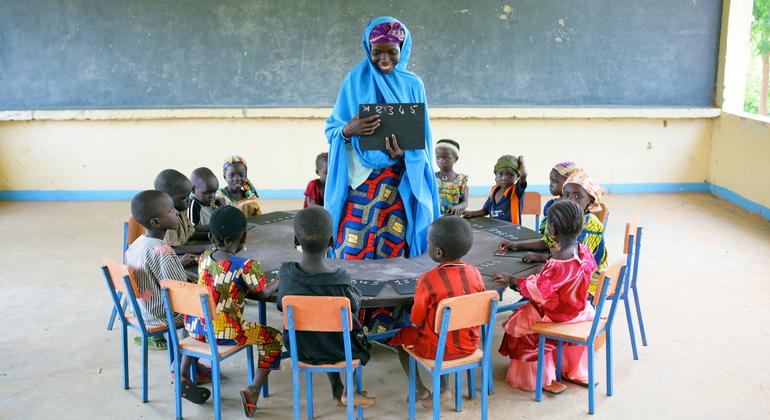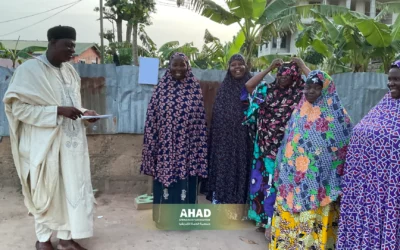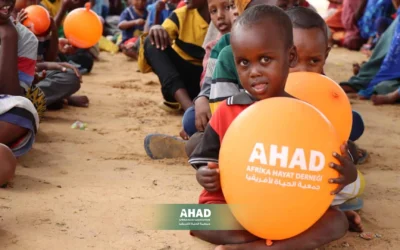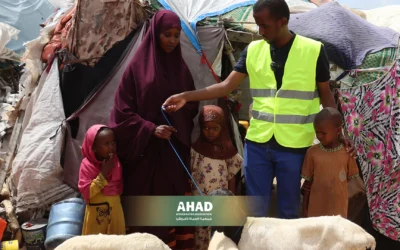Education reform in Africa
Education is one of the fundamental pillars of sustainable development, it opens the doors of opportunities and contributes to reducing poverty and improving the socio-economic conditions of individuals and communities. In Africa, education improvements are an urgent necessity, as many countries suffer from poor educational infrastructure, lack of resources and qualified teachers. This article aims to review one of the examples of education reform in Africa, focusing on initiatives, challenges and results.
Challenges facing education in Africa
Education in Africa faces many challenges that prevent achieving sustainable development and improving the quality of life. The following is an extended explanation of these challenges:
Weak infrastructure
Many African countries are experiencing an acute shortage of schools, especially in rural areas. This shortage leads to overcrowding of classrooms and poor condition of educational facilities such as buildings, furniture, and sanitary facilities. The absence of adequate infrastructure hinders students from receiving education in an appropriate environment and reduces the effectiveness of the educational process.
Lack of qualified teachers
There is a significant shortage of qualified teachers in Africa, which directly affects the quality of Education. The available teachers often lack adequate training and the necessary resources to carry out their tasks effectively. This deficiency negatively reflects on the performance of students and the achievement of education goals.
Limited financial resources
African governments suffer from a lack of budgets for Education, which limits the ability to improve infrastructure, provide educational materials, and train teachers. The lack of funding also affects the ability to implement effective and sustainable educational programs.
Inequality
There is a huge disparity in educational opportunities between rural and urban areas, and between males and females. Often, schools in rural areas are less equipped and more difficult to access, which limits educational opportunities for rural children. Girls also face additional challenges such as early marriage and household burdens that hinder them from continuing education.
Multiple languages
In Africa there are hundreds of languages and dialects, which makes it difficult to develop a unified educational curriculum. Education is often conducted in the language of the former colonizer or in one official language, which creates a barrier for students who do not speak these languages at home. This linguistic diversity requires the development of multilingual curricula and teaching materials, which requires considerable resources and efforts.
Conflicts and wars
Some African countries are experiencing armed conflicts and civil wars, which lead to the destruction of schools and the displacement of children. Conflicts lead to the loss of years of education and make it more difficult to provide a stable and safe learning environment. Children living in conflict zones often lack the psychological and social support needed to continue their education.
Meeting these challenges requires coordinated efforts and international cooperation, coupled with government commitment and political will to allocate the necessary resources to improve education in Africa. Sustainable improvements in education can significantly contribute to the economic and social development of the continent.

Possible solutions to improve education in Africa
Improving the quality of education in Africa requires the implementation of a set of innovative and comprehensive solutions that address various challenges. The following is an extended explanation of these solutions:
Infrastructure improvement
– Build and equip more schools: focus on establishing new schools in rural and remote areas to ensure that education reaches all children. It also requires equipping schools with basic facilities such as classrooms, offices, and libraries.
– Provision of electricity, water and sanitation : ensure the availability of electricity, potable water and sanitation in all schools to improve the learning environment and the overall health of students and teachers.
Teacher training
– Providing comprehensive and continuous training programs for teachers: developing training programs to improve teachers ‘ skills and educational knowledge. The technology can be used to provide remote training and access to teachers in remote areas.
– Improving working conditions and salaries : increasing salaries, providing incentives to attract qualified teachers, improving working conditions, including providing decent housing and support services.
Increased funding
– Allocate a larger percentage of the national budget to education : increase government funding allocated to the education sector to meet basic needs and achieve the required improvements.
– Encouraging private and international investments: attracting investments from the private sector and international organizations to support education projects. These investments can include building schools, providing scholarships, and financing training programs.
Promoting digital education
– The use of technology to provide online educational resources: the development of electronic educational platforms that provide access to curricula and online educational resources, giving students and teachers access to up-to-date and diverse information.
– Providing digital devices for students and teachers to distribute tablets or computers to students and teachers to enable them to use technology in the educational process. Such devices can include interactive educational programs and tools for distance learning.
Promoting inclusive education
– Promote education for all: ensure that all children have access to education regardless of their gender or social background. This includes the removal of barriers that prevent girls and children from marginalized groups from attending school.
– Support of education programs for girls and marginalized groups:: implementation of special programs aimed at promoting the education of girls and children from disadvantaged ethnic and economic groups, including the provision of scholarships and material and moral support.
Promotion of local languages
– Developing educational materials in local languages: creating educational materials that fit the local cultural and linguistic context to enhance students ‘ understanding and encourage them to learn.
– Training teachers on the use of these languages in education : training teachers to teach school subjects in local languages to facilitate the learning process and improve learning outcomes.
Coping with the impact of conflicts
– Establishment of temporary schools in conflict areas: provision of temporary educational facilities in conflict-affected areas to ensure the continuity of education for affected children.
– Providing psychological and social support to conflict-affected children: providing psychological and social support services to conflict-affected children to help them overcome psychological trauma and actively participate in the educational process.
The implementation of these solutions requires concerted efforts from governments, civil society, the private sector, and international organizations. Investing in education is an investment in the future, as it can contribute to improving living standards, enhancing social stability, and advancing economic development in Africa.

Examples of successful initiatives in education reform in Africa
Education reform in Africa requires the adoption of innovative and sustainable initiatives. The following are examples of some successful initiatives that have contributed to improving the quality of education in Africa:
The “Isaka” initiative in Ghana
A program for training teachers using modern technology
The “Isaka” initiative is an innovative educational program in Ghana that aims to improve the quality of education through teacher training using modern technology. The initiative includes:
– Providing online training courses: providing educational materials and online training courses for teachers, giving them access to the latest teaching methods and pedagogical resources.
– The use of tablets and computers: providing teachers with tablets and laptops loaded with training programs and educational applications.
– Developing teachers ‘ technical skills: training teachers to use technology in the classroom to enhance the teaching and learning process.
The “Isaka” initiative successfully improved the skills of teachers and increased their efficiency, which led to an improvement in the quality of education in the participating schools.
Smart schools in Kenya
Using tablets and digital content to improve the quality of Education
The “Smart Schools” program in Kenya aims to integrate technology into the educational system to improve the quality of education and increase student interaction. The initiative includes:
– Distribution of tablets: providing students and teachers with tablets containing study materials and digital educational curricula.
– Digital content development: create interactive and multimedia educational content to facilitate the learning process and motivate students.
– Teacher training: train teachers to use technology and tablets in the classroom to enhance interaction with students and simplify the educational process.
The “Smart Schools” initiative has resulted in improved student interaction and increased success rates, reflecting the impact of technology in improving the quality of Education.
World Food Programme
Providing school meals to motivate children to attend school
The World Food Program (WFP) is introducing an initiative to provide school meals in several African countries with the aim of:
– Motivate children to come to school: provide healthy meals for children in schools to attract and encourage them to attend and participate in the educational process.
– Improve nutrition and Health: ensure that children have access to nutritious meals that help improve their overall health, ability to concentrate and learn.
– Support for poor families: alleviate the financial burden of poor families by providing free meals for children in schools.
This initiative has achieved great success in increasing attendance rates and reducing school dropout rates, in addition to improving children’s health and academic performance.
Education reform in Africa requires joint cooperation between governments, international organizations, the private sector and local communities to ensure tangible and sustainable progress. Successful initiatives such as “Isaka”, “Smart Schools”, the World Food Program reflect the importance of innovation and cooperation in meeting the challenges of education and achieving tangible improvements. By leveraging technology, enhancing training, and supporting students and families, significant improvements in the quality of education in Africa can be achieved.
You can visit the AHAD website to find out more about the projects it offers
ALSO READ
WHAT THE FOOD BASKET CONTAINS IN AHAD
Join us in our message







